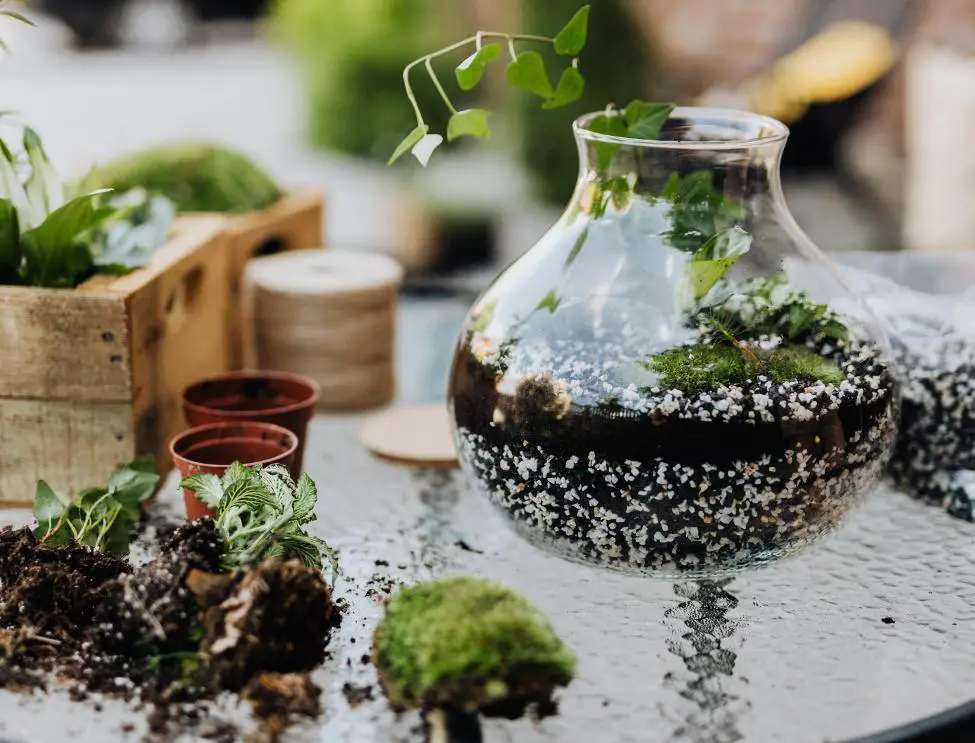Are you thinking about creating a terrarium but not sure where or how to start? In this article we will talk about how to create a terrarium and what are the steps to setup and supplies needed to setup this tiny ecosystem in a jar.
What is a terrarium?
A Terrarium is an enclosed ecosystem which can be entirely self-sustainable. Once set-up and watered, you will never need to open it again since it will regulate its water and nutrient cycles.
Terrariums are a fun way to display plants, they are perfect for small spaces, great for the novice gardener and a good project to get the kids involved in.
What supplies do we need for a terrarium?
- An airtight container. Some good examples include: glass jars with clip tops, screw on lids or corks. It need to be closed as this will allow it to maintain moisture in the air.
- Porous mesh which allows water through but not substrate.
- Rocks or gravel. Any aquarium gravel or pebbles should do.
- Some activated carbon for fish tank filters or charcoal.
- A selection of small to medium local plants and mosses.
Steps to setup a terrarium
- The first step is to place about an inch of stones or gravel in the base of your container.
- Next, sprinkle on a coating of activated carbon sticks or charcoal to help with filtration.
- The next step is to cut out the shape of the base of your container from the porous mesh. It needs to cover the gravel layer entirely so, it is best to cut it slightly larger than the shape itself.
- Once the mesh is in place over the gravel, add the soil. The soil layer should be deeper than the gravel layer to allow root space.
- Next, add some plants to the terrarium. You could make a native terrarium by using plants from nearby parks and gardens. Or, use tropical plants. Place your choice of plants in the terrarium, paying close attention to your arrangement and how you would like it to look aesthetically. Thinks about putting larger plants in the background and smaller ones in the foreground.
- Position moss between main plants. It is excellent for ground covering, as it will eventually spread and make your terrarium look lush and wild. There are different varieties to choose from.
- As an optional, you could add pieces of bark or wood for landscaping.
- The final step is to water your terrarium by misting. Spray a very generous amount of water over the plants and moss to help them settle and to provide the ecosystem with water which will be continuously cycled throughout the terrarium.
How does a terrarium work?
As mentioned before, once the terrarium is created, it will self regulate its water and nutrient cycles. It works as follows:
The purpose of the gravel layer is to separate the standing water from the soil to avoid plant roots rooting. The water will collect here as a water reservoir then it will evaporate, condensate on the walls of your glass container and then fall back into the substrate, effectively replicating the natural water cycle. This will ensure that the terrarium will naturally water itself.
A good soil mix should retain moisture well and be a mix of dead leaves, moss and compost.
When choosing plants, pick some with a variety of leaf types, textures and shades of green. Also, if you come across any worms or woodlice, set them aside for later, as worms will help add nutrients to the soil and woodlice will decompose any dead matter which will help to beak down nutrients. These nutrients will be absorbed by the plants through their roots by osmosis.
You may notice that some plants die, this is normal, other plants will grow in their place and seeds will spread.
As we have mentioned in other articles, gardening is great for our mental health. Creating this tiny ecosystem in a container and placing it on your windowsill, will allow you to observe how plant life changes and spreads over time.
